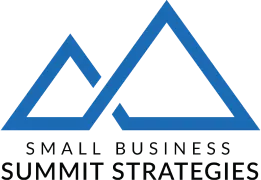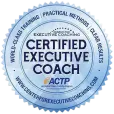
Hiking in the mountains isn’t just a hobby for me; it’s a passion that mirrors my passion for business building. The two activities, in my mind, are deeply interconnected. Imagine the journey of a novice hiker: it’s mostly about taking one careful step after another, with most of your focus on not tripping over the next rock or root. You spend a lot of energy trying to avoid the obvious dangers that lie ahead. Every once in a while, you stop to look around, to appreciate the journey so far and to plan your next moves. It’s a delicate balance, and a lack of attention, even for a moment, can lead to serious consequences.
I was reminded of the parallels between hiking and business this weekend while I was chatting with a new business owner, who’s also just started working with me as a coaching client. I started to think about some of the sneaky ways things can go wrong when navigating the business world. I made all these mistakes in my early days in business. Despite overcoming them eventually, they were hard lessons learned, causing setbacks and a fair share of stress. For any entrepreneur, understanding your business landscape and being mindful of these pitfalls is crucial. It can make all the difference between a successful journey to the top and an arduous climb with an unfulfilled goal. My own experiences have taught me a lot, and I’m here to share these lessons to help you sidestep the challenges that once tripped me up.
Mistake #1. Charisma vs. Competence: The Guide Who Talked a Good Talk
Picture this: you hire a mountain guide based on their charisma and the confidence they exude. It’s not until you’re halfway up the mountain that you come to the startling realization: they lack the real-world experience necessary for such an endeavor. This scenario is all too familiar in the business world. Often, leaders find themselves enchanted by a team member’s charm, neglecting to thoroughly assess their proven abilities and track record. One time I was working with a person I had hired to manage our accounts receivable and found a drawer stuffed with invoices she hadn’t processed because she didn’t know how—about $40,000 was just sitting there uncollected. Ouch. This was a stark reminder of the importance of competence over mere confidence. Just as you need a guide who intimately knows the mountain trails, your business requires team members whose skills have been tested and verified. As Ronald Reagan used to say, “Trust, but verify.”
Mistake #2. Dangerous Assumptions: The Misjudged Weather Forecast
Here’s something to consider: a hiker sees a clear morning sky and thinks it’s the perfect day for a hike, but they don’t bother to check the full weather forecast. Suddenly, they’re caught off-guard by an unexpected storm. This is a lot like what happens in business when we make assumptions without thoroughly checking the facts. In my early business days, I was confident about our success because we were known for excellent service. It seemed logical to me that this would naturally lead to our business thriving. However, reality was more complex. I learned that not everyone prioritizes service quality as their main decision factor. Influential community members and referral partners, for example, were often influenced by other aspects, such as financial incentives to send business to our competitors. This realization was a shock to me and a tough lesson. It showed me that what I value might not align with what others value. The key takeaway for entrepreneurs is to research thoroughly and test every assumption, much like a hiker should review the entire weather forecast, not just the current sky, to avoid unpleasant surprises.
Mistake #3: The Illusion of the Beaten Path – Expecting a Crowd Where None Exists
There’s a common belief among climbers that a well-marked trail always leads to a crowded summit. Entrepreneurs often fall into a similar trap, subscribing to the “build it, and they will come” philosophy. However, just as a climber might reach the top only to find it deserted, business owners can face the stark reality of no market demand for their product. I learned this lesson firsthand in a particularly tough way. Once, acting on feedback from one really good customer, I decided to launch a specialized service line in my business. The idea seemed promising, so I fully committed, investing $125,000 and bringing on two new employees to manage the project. We launched it with high hopes. But the market’s response? Utter silence. The return was dismal – barely $10,000, a fraction of our investment. In the end, we had to shut down the program. It was more than just a financial hit; it was a stark reminder of the importance of thorough market research and validation. Just as climbers scout their route before setting out, entrepreneurs must rigorously test and validate the market demand for their ideas.
Mistake #4. Feature-itis: The Overpacked Backpack
Consider an inexperienced hiker who loads their backpack with every imaginable piece of gear, believing that more equipment means better preparedness. Ironically, this extra weight only makes the journey more challenging. This is akin to what happens in business with the over-accumulation of features, often dubbed ‘feature-itis.’ In pursuit of creating the perfect product or service, there’s a tendency to add more and more features, assuming it enhances value. Yet, this often leads to an overburdened, less appealing offering.
I remember one time when I enthusiastically invested in a new technology for my business. To me and my team, the advantages seemed crystal clear. We were so convinced of its usefulness that we never paused to ask our customers if they needed or even wanted this technology before we committed a substantial amount of money to it. Had we sought their input, we might have discovered a crucial truth: what we found exciting was not necessarily a hit with our customers. The result was an expensive distraction that did little to drive our business growth.
The lesson here is to aim for a ‘light but right’ approach. In business, as in hiking, it’s not about the quantity of what you carry, but the quality and relevance. Focus on essential features that genuinely meet customer needs, rather than an overwhelming array of bells and whistles.
Mistake #5. Vanity vs. Meaningful Metrics: The Misleading Trail Markers
In hiking, just as in business, following the wrong signs can lead you off course. On the trail, it might be misleading markers, but in business, it’s often vanity metrics like social media likes. These can give a false sense of direction. In the early days of my business, I was laser-focused on growth, but I overlooked a critical question: were we growing profitably? I was keen on adding new clients, but I didn’t always stop to consider if it truly benefited our company or if the costs of delivering our promises exceeded the revenue we’d earn.
This realization led me to reevaluate our objectives and retrain our team. We shifted from seeking growth at any cost to aiming for profitable growth. It was about changing our approach to measure what truly matters, much like using a reliable compass and map to navigate a hike. This shift in focus ensures that every business step we take moves us closer to our real goals, not just the ones that look impressive on the surface.
Mistake #6. Blind Optimism: Ignoring the Signs of a Landslide
This was the hardest mistake for me to overcome, especially early on. Blind optimism in the business world is akin to a hiker overlooking warning signs of an impending landslide. It’s essential to balance optimism with a preparedness for potential risks. Just as a prudent hiker evaluates the path ahead for stability, entrepreneurs need to exercise cautious trust, waiting for concrete evidence of reliability before fully committing.
One of my favorite books in my early business journey was Jim Collins’ Good to Great, which introduces the Stockdale Paradox, named after Admiral Jim Stockdale, a Vietnam War POW. His harrowing experience led to a profound realization about enduring adversity.
Here’s a concise summary of the Stockdale Paradox:
- Confront the Brutal Facts: This means accepting the tough realities of your situation. It’s not about pessimism; it’s about facing the truth of the challenges and obstacles you encounter.
- Maintain Unwavering Faith: Despite these harsh realities, it’s crucial to hold on to the belief that you will ultimately succeed, no matter the hardships.
Stockdale spent years in captivity under harsh conditions, yet he never lost his conviction that he would survive and use his ordeal as a pivotal life experience. At the same time, he was acutely aware of the grimness of his situation.
The essence of the paradox is in balancing realism with optimism. It involves keeping a hopeful outlook towards the future while simultaneously navigating the most challenging aspects of your current circumstances. This principle is not just applicable in extreme scenarios like Stockdale’s but is also relevant in business and personal challenges. Recognizing the hard truths while fostering a firm belief in eventual success is vital for sustained achievement.
Summit Insights
Navigating through the entrepreneurial world really is a lot like planning a very, very long mountain hike. It takes a great deal of diligence, some smart preparation, and a good dose of foresight. Think of it this way: by understanding and steering clear of the common missteps I’ve shared – those I’ve stumbled over myself – you’re setting yourself up for a smoother climb in your business endeavors.
In hiking, as in business, each challenge is more than just an obstacle; it’s a chance to learn something new, to build your strength. It’s about putting together a solid plan and gathering a team that shares your vision and determination. Picture reaching the summit after all that hard work and savvy navigation. That’s what we’re aiming for in business. Keep pushing forward with grit and resilience. Trust me, the view from the top, after all those ups and downs, is going to be worth every step.
About the Author
Ron Tester is a Certified Executive Coach and Book Yourself® Solid Coach who helps service professionals and solopreneurs grow their businesses without sacrificing their personal lives. With over 20 years of entrepreneurial experience, Ron provides practical guidance on marketing, sales, operations, and work-life balance. Learn more at https://www.rontestercoaching.com/about.




